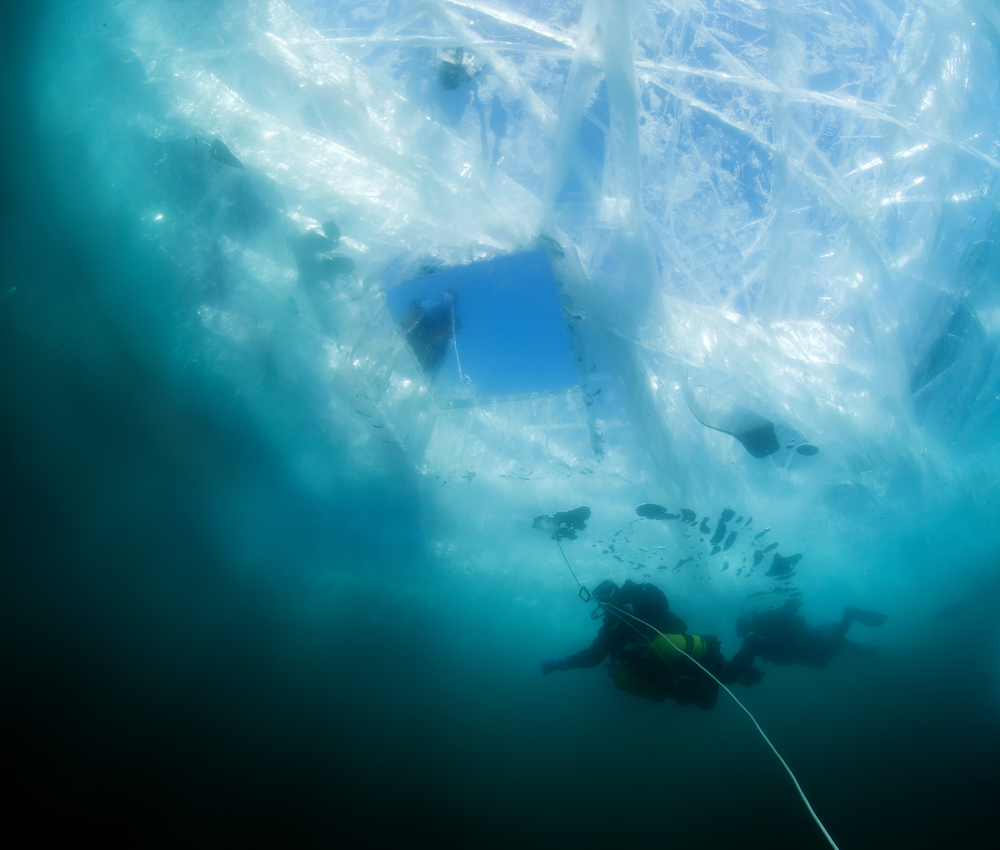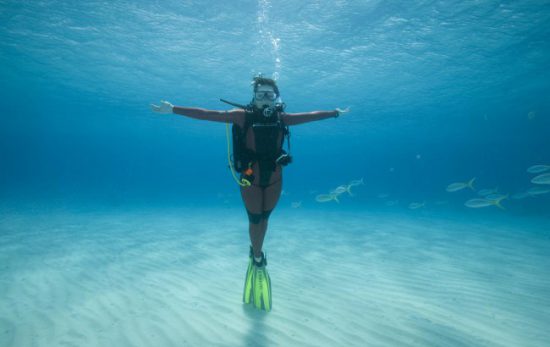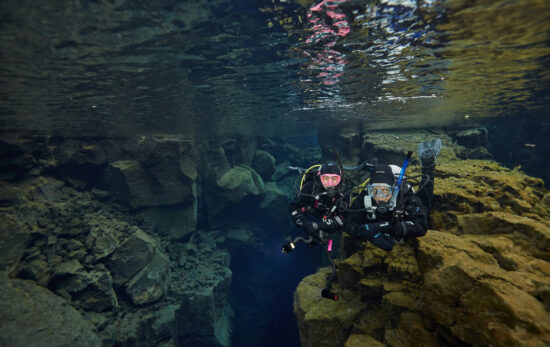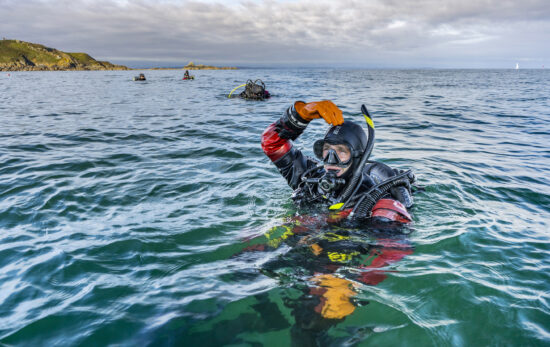Why stop when your local dive site freezes in the winter? Ice diving expands your diving season and delivers a rewarding challenge. The crystal clear visibility and upside down ice mountains make for a spectacular view, perfect for videographers and photographers.
So what does it take to join the PADI Ice Diver course? Here’s a few things you’ll need if you want to take the frozen plunge.
Meet the prerequisites
First things first. In order to take the Ice Diver Specialty course, you need to be Advanced Open Water certified and at least 18 years old.
Appropriate exposure protection
This most likely means a familiarity with diving in a drysuit. Experience in your drysuit before you start ice diving means you can worry about one less thing. A hood, boots, gloves or mitts are necessary too. You’ll appreciate any experience you have with dry gloves on an ice dive.
You’ll also need to environmentally protect your regulator. This means taking your reg into the dive shop for service and in some cases having an environmental kit installed. They will prepare it for polar conditions, which will help prevent your regulator from freezing. Be sure to allow enough time in your schedule for taking this important step.
Extra weight and ways to keep your gear tidy
The weights are to help with the extra buoyancy of the drysuit. Also, you’ll need to make sure to tape loose fin straps and secure dangling hoses as you’ll be diving in a unique environment where tidy gear is a must. Which bring us to…
Be prepared to dive in an overhead environment
Just like wreck diving and cavern diving, ice diving is considered a penetration dive. In the PADI Ice Diving course, the open water training dives are limited to within 40 meters/130 feet linear distance from the surface (linear distance includes vertical and horizontal distance).
Not being able to get to the surface from a straight ascent means you’ll need to be more careful with gas consumption. Your math skills will come in handy for making these calculations.
Ice dives also require that you dive with a line or rope. One end of the line is attached to something on the surface, and the other end is tied to you. Line awareness and avoiding entanglement are essential skills for ice divers to master.
And of course… a sense of adventure!
Ice diving puts you in a beautiful and unparalleled environment. If you’re looking for exciting adventures not every diver experiences, this is the place for you.
Do you think you have what it takes to be an ice diver? Contact your local dive shop to learn more about the PADI Ice Diver Course.





